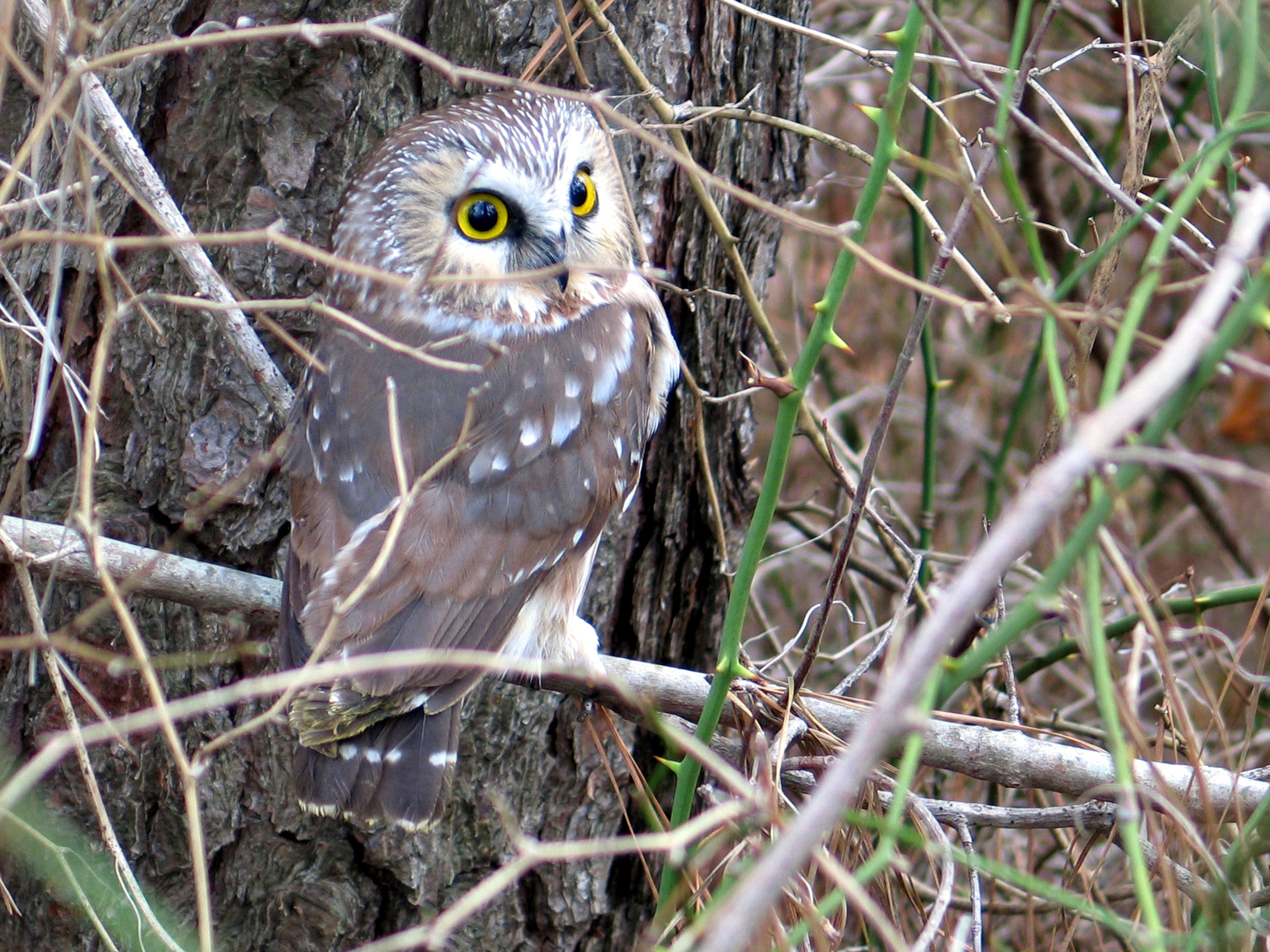Uncovering the Secrets of Northern Saw-whet Owls
Northern Saw-whet Owl Photo by Dave Brinker
As a charismatic representative of the high elevations within the central Appalachian Mountains, the northern saw-whet owl (NSWO) is a perfect ambassador to highlight the unique ecology of southwest Virginia’s Blue Ridge. In the eastern U. S., this rarely-seen species is primarily found in northern boreal forests, but their range also stretches south along the Appalachian Mountains, including areas of Virginia.
These small owls weigh less than 6 ounces and are about the size of an American robin. They rely on forested areas and nest in tree cavities, so habitats with abundant standing dead trees are best for breeding. They will nest in a variety of hollow spaces in dead trees, but usually rely on the excavations of woodpeckers. In Virginia they are usually found breeding only at our highest elevations and usually within or near spruce forests.
During the breeding season, saw-whets are their most conspicuous with regular calling between late-March and mid-June in the southern Appalachians. Their high-pitched too-too-too call is very different than what most people think of when they think of an owl call. The female will incubate 4-7 eggs for about 30 days while the male delivers food to the nest. After the eggs hatch, the female will stay in the nest for about 20 more days feeding and keeping the young warm while the nestlings become more independent. She will then leave the nestlings in the nest by themselves for about 10 more days. The male will continue to deliver food to the nest for the young owls until they fledge the nest. Saw-whets usually eat a variety of small mammals, but their diet can also include small birds.
Due to its small size and secretive nature, much of this species’ life history remains a mystery in Virginia. Blue Ridge Discovery Center is beginning to uncover the secrets of this owl in our area. Last year, we were able to briefly survey the high country around Whitetop Mountain and Mount Rogers for possible breeding NSWO, and three owls responded to the playback calls. The results from 2018 suggest that NSWO might still be breeding here, but were not conclusive. This year we would like to increase the effort of the survey to be able to confirm that this small species of owl is breeding in the spruce forests of southwest Virginia. We will answer this by using a standardized audio playback protocol for NSWO. Due to the quality of the habitat within the area, it is likely that breeding is occurring. Our project will answer this question by allowing us to survey the likely habitat with repeat visits to the same points throughout the breeding season. This level of effort will result in a clear understanding of NSWO use of the potential breeding habitat. If we are able to document breeding, our next goal is the delineation of breeding territories. This will be crucial for future conservation measures for these owls.
If you would like to find out more about this research or would like to help support our effort, please visit our project at Experiment.com by following this link:
